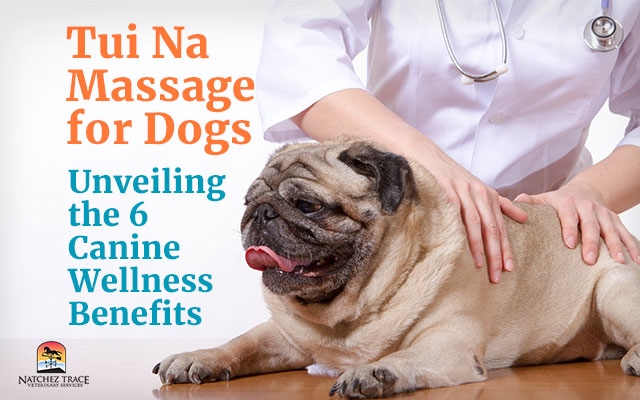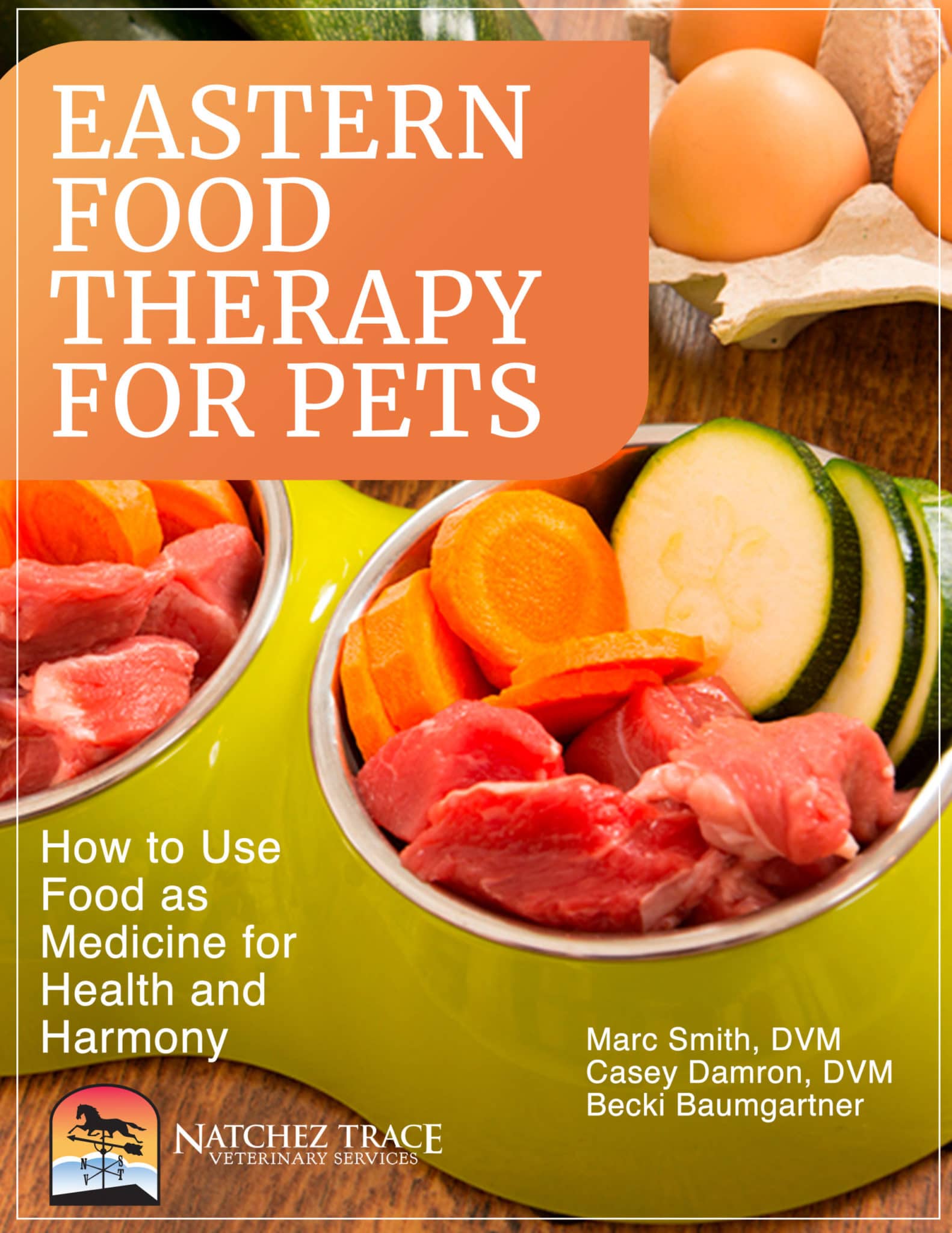 Tui Na massage, an ancient Chinese therapeutic practice, has transcended human well-being and found its place in canine care. Rooted in Traditional Chinese Veterinary Medicine (TCVM) principles, Tui Na combines rhythmic motions, stretches, and acupressure to promote balance and vitality.
Tui Na massage, an ancient Chinese therapeutic practice, has transcended human well-being and found its place in canine care. Rooted in Traditional Chinese Veterinary Medicine (TCVM) principles, Tui Na combines rhythmic motions, stretches, and acupressure to promote balance and vitality.
Recently, the significance of canine massage, including Tui Na, has gained momentum as pet owners recognize its potential to enhance their furry friends’ overall health and happiness. Let’s delve into the world of Tui Na massage for dogs, exploring its origins, benefits, and how this ancient technique can contribute to the well-being of our canine companions.
Understanding Tui Na Massage for Dogs
Tui Na massage is a traditional Chinese therapeutic practice that involves manual manipulation of the body’s soft tissues to promote balance and healing. This ancient technique has gained popularity as a practical holistic approach to canine well-being. Here’s a closer look at the origin, principles, and benefits of Tui Na massage for dogs:
Origin and Principles:
- Tui Na originated from Traditional Chinese Medicine and shares principles with acupuncture and herbal medicine.
- The technique involves specific hand movements, acupressure, and stretching to balance the flow of Qi (energy) in the body.
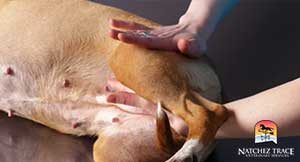 How Tui Na Differs from Other Massage Techniques:
How Tui Na Differs from Other Massage Techniques:
- Tui Na employs pushing, pulling, and kneading techniques, distinguishing it from Western massage methods.
- It focuses on restoring the body’s harmony by addressing both physical and energetic imbalances.
Benefits of Tui Na for Dogs:
- Tui Na is renowned for promoting relaxation, reducing muscle tension, and enhancing circulation.
- Beyond physical benefits, it contributes to emotional well-being and can be beneficial in managing certain health conditions.
Understanding the fundamentals of Tui Na massage sets the stage for exploring its application in canine care. It provides a holistic avenue for enhancing dogs’ overall health and vitality.
Preparing for Tui Na Massage
Before engaging in Tui Na massage for dogs, it’s crucial to create a calm environment, understand canine body language, and ensure the dog’s comfort. These preparatory steps contribute to a positive and effective massage experience:
Creating a Calm Environment:
- Choose a quiet, familiar space free from distractions to minimize stress for the dog.
- Use soft lighting and gentle background music to foster a serene atmosphere.
Understanding Canine Body Language:
- Learn to interpret your dog’s signals, such as signs of relaxation, tension, or discomfort.
- Observe tail movements, ear positions, and overall demeanor to gauge their comfort level.
Ensuring the Dog’s Comfort:
- Place a non-slip mat on the massage surface to stabilize the dog.
- Have a supply of treats or toys nearby to reinforce positive associations with the massage.
By preparing thoughtfully, you set the stage for a positive and stress-free Tui Na massage session, promoting a harmonious connection between you and your canine companion.
Step-by-Step Guide to Tui Na Massage for Dogs
Embark on a harmonious journey with your canine companion through Tui Na massage, a therapeutic practice rooted in traditional Chinese medicine. Follow this step-by-step guide to nurture your dog’s physical and emotional well-being:
Creating a Serene Setting:
- Choose a quiet space free from disturbances.
- Maintain a comfortable room temperature and utilize a non-slip mat for stability.
Gentle Warm-Up:
- Begin with light touches and calming strokes to ease your dog into the massage experience.
- Gradually introduce the concept of touch, ensuring a relaxed environment.
Understanding Canine Body Language:
- Observe your dog’s cues and responses during the massage.
- Tailor your approach based on their comfort and signals of relaxation.
Main Massage Techniques:
- Implement various Tui Na strokes, including kneading, rolling, and acupressure.
- Focus on target areas such as the neck, back, and limbs, adjusting pressure based on your dog’s preference.
Addressing Specific Points:5. 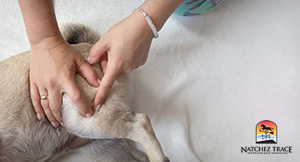
- Explore acupressure points gently, considering your dog’s individual needs.
- Pay attention to areas that may benefit from increased circulation and tension release.
Concluding the Session:
- Gradually conclude the massage with soothing strokes and positive affirmations.
- Allow your dog time to rest and process the experience.
Embark on this holistic journey regularly, fostering a deeper connection and promoting your dog’s overall health and happiness.
Signs Indicating the Need for Tui Na Massage
Recognizing when your dog may benefit from Tui Na massage involves being attuned to various signs of stress, discomfort, or underlying conditions. Watch out for these indicators that suggest your dog may benefit from a Tui Na session:
 Recognizing Stress or Discomfort:
Recognizing Stress or Discomfort:
- Notice changes in behavior, such as increased pacing, restlessness, or avoidance.
- Observe if your dog displays anxiety, like excessive panting or trembling.
Conditions Tui Na May Address:
- Identify specific issues like muscle stiffness, joint pain, or mobility challenges.
- Consider Tui Na massage for dogs experiencing stress-related conditions, including anxiety or fear.
Integrating Tui Na into a Dog’s Wellness Routine:
- Recognize the potential of Tui Na as a proactive approach to holistic well-being.
- Consider regular Tui Na sessions to maintain balance and address emerging concerns.
Understanding these signs allows you to provide timely and supportive care through Tui Na massage, enhancing your dog’s overall physical and emotional health.
Safety Considerations and Cautions
Ensuring the safety and well-being of your dog during a Tui Na massage is crucial. Here are key considerations and cautions to keep in mind:
Consulting with a Veterinary Professional:
- Prioritize your dog’s health by consulting a veterinarian before starting Tui Na.
- Seek guidance on any existing health conditions or concerns that may impact the massage.
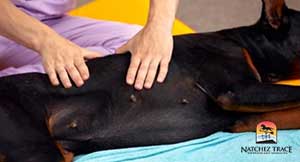 Adapting Techniques for Individual Dogs:
Adapting Techniques for Individual Dogs:
- Recognize that each dog is unique, and their response to massage varies.
- Modify pressure and techniques based on your dog’s comfort level and individual needs.
Recognizing Limitations and Seeking Professional Guidance:
- Acknowledge the limitations of at-home Tui Na and consult with a professional for complex issues.
- If unsure about specific techniques or your dog’s response, seek guidance from a certified canine massage therapist or veterinary professional.
By prioritizing safety and seeking professional advice, you can ensure that your furry companion has a positive and beneficial experience during Tui Na massage.
Benefits of Tui Na Massage for Dogs
Tui Na massage for dogs encompasses several benefits that contribute to their overall well-being:
- Stress Reduction: Tui Na helps alleviate stress and anxiety in dogs by promoting relaxation through gentle, targeted massage techniques. This can be particularly beneficial for dogs experiencing environmental changes, new surroundings, or anxiety-related behaviors.
- Improved Circulation: The massage techniques involved in Tui Na stimulate blood circulation, promoting better oxygenation and nutrient delivery to tissues. Enhanced circulation can contribute to the overall health of a dog’s muscles and organs.
- Joint Flexibility and Mobility: Tui Na includes specific strokes and manipulations that target joints, enhancing flexibility and mobility. This is particularly advantageous for senior dogs or those with joint-related conditions, promoting a fuller range of motion.
- Pain Management: For dogs dealing with chronic pain or discomfort, Tui Na may provide relief. The massage techniques work to release tension in muscles and tissues, potentially reducing pain associated with various conditions.
- Strengthened Bond with Owners: Regular Tui Na sessions create positive interactions between dogs and their owners. The massage fosters a sense of trust and connection, strengthening the bond between the pet and the caregiver.
- Immune System Support: Some studies suggest that massage therapy can positively impact the immune system. Tui Na’s potential to enhance overall well-being may contribute to a dog’s resilience against illness and disease.
While Tui Na massage offers numerous benefits, it’s crucial to consult with a veterinary professional or a certified canine massage therapist to ensure its appropriateness for your individual dog’s needs and health status.
In conclusion, Tui Na massage for dogs emerges as a holistic and effective approach to enhance the well-being of our canine companions. Understanding its origins, principles, and the distinctive advantages it offers over other massage techniques empowers pet owners to play an active role in their dog’s overall health.
 By embracing Tui Na, recognizing its potential indications, and ensuring safety measures, pet owners can embark on a journey that nurtures their dogs’ physical and emotional balance. As we celebrate the success stories and positive outcomes, the encouragement is clear – integrate Tui Na into your dog’s wellness routine, fostering a harmonious connection between canine companionship and holistic care.
By embracing Tui Na, recognizing its potential indications, and ensuring safety measures, pet owners can embark on a journey that nurtures their dogs’ physical and emotional balance. As we celebrate the success stories and positive outcomes, the encouragement is clear – integrate Tui Na into your dog’s wellness routine, fostering a harmonious connection between canine companionship and holistic care.
Consult with our veterinarian for professional guidance before performing Tui Na massage for dogs.
People Also Ask:
Is Tui Na massage suitable for all dog breeds and sizes?
- Tui Na massage is generally safe for most dogs, regardless of breed or size. However, individual responses may vary. It’s recommended to consult with a veterinarian or a certified canine massage therapist to ensure the appropriateness of Tui Na for your specific dog.
How often should I perform Tui Na massage on my dog?
- The frequency of Tui Na sessions depends on your dog’s health, age, and specific needs. Consult with a veterinary professional or a qualified canine massage therapist to create a tailored plan. Typically, starting with shorter sessions and gradually increasing frequency is advisable.
Can Tui Na massage address specific health issues in dogs?
- Tui Na massage has various health benefits, including stress reduction and improved circulation. While it may contribute to overall well-being, consulting with a veterinarian for specific health concerns is essential. Tui Na can be part of a holistic approach, complementing veterinary care rather than replacing it.

